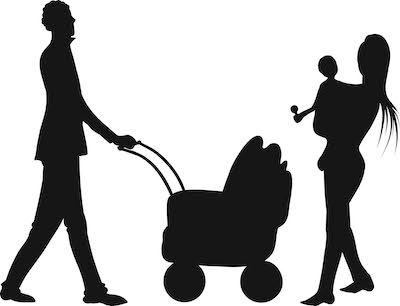By Amy DuFrane
No doubt the COVID-19 pandemic impacted all of us in many ways, but it was often working women who bore the brunt. From March to September 2020, 2,651,000 women left the workforce in contrast to 1,705,000 men. In September 2020 alone, 865,000 women dropped out– four times the number of men did. As childcare and educational systems collapsed, millions had to sideline their careers when left without support.
There was already a problem before the devastation created by the global health crisis. Women comprise almost half of the U.S. labor force. According to the U.S. Bureau of Labor Statistics (BLS), approximately 71% of mothers are in the workforce.
Researchers have determined that 41% of working women are the sole or primary breadwinner in their household. This valuable talent pool is disproportionally represented in low-wage service jobs, lack accessible childcare and tend to shoulder the majority of at-home responsibilities.
Considering these harsh facts, it’s hard to dispute the existence of a motherhood penalty. Sadly, in 2021, many organizations still operate as if it’s the 1950s – out of sync with today’s reality. Stereotypes about mothers and fathers abound, presenting barriers to women during their childbearing years.
Many women are denied leadership roles because employers assume that family commitments preclude them from giving their all for demanding jobs. The high cost of childcare forces women out of the workforce, especially hourly wage earners. Few employers have mastered flexible schedules and guaranteed paid leave remains elusive.
I haven’t even begun to tackle the biggest point of disparity: the earnings gap. Mothers who work full-time are paid an average of 70 cents for every dollar a father makes.
Racial and gender wage inequities have been further aggravated by the pandemic with Black mothers paid 52 cents and Latina mothers paid 46 cents compared to one dollar paid to white male colleagues. Wage inequities combined with lost earnings have made bad situations worse, deepening generational financial insecurity and suffering.
Another major issue for working mothers is the lack of affordable childcare. The childcare system perpetuates the earnings gap, relying heavily on an underpaid, primarily female workforce.
Between February and August 2020, mothers of children 12 and younger lost 2.2 million jobs compared to the 870,000 jobs lost among fathers. Childcare availability remains a problem as many centers shutdown and show no signs of re-opening. Schools that served as childcare safety nets have also been inconsistent in supporting mother’s availability to work.
Are there some glimmers of optimism? Not quite. The most recent BLS report showed that women gained 57.3% of the 531,000 jobs added in October 2021. However, before the pandemic started, women’s labor force participation rate hadn’t been this low since 1988. Many of the readers of this article weren’t even born yet. Despite being lauded as essential workers – holding up key sectors such as healthcare – hard won progress has slipped away.
Healthy economic growth thrives on diverse talent pools and women’s gains in the labor market helped create an economy that – according to some researchers – is $2 trillion larger than it was in 1970.
A Pew Research Center study published in October 2020 revealed than the share of mothers who said it would be best for them to work full-time dropped from 51% to 44%. Ensuring this talent pool remains in the workforce means shoring up work/family infrastructure and putting proactive programs in place.
Make Flexible Work the Norm, Not An Anomaly: Labor shortages are deepening, and the workforce is being reshaped as a result. Of 52 economists surveyed by The Wall Street Journal in October 2021, 22 of them predicted that participation would never return to pre-pandemic levels. Welcoming working mothers back into the workforce means making it easier for them to engage under flexible work arrangements that recognize their needs.
Compensation Matters: Well-evidenced in the leisure and hospitality sector, compensation matters. On average, these sectors historically featured lower wages. The recent onslaught of hiring bonuses and increased wages has improved job-seeker receptiveness. In the first six months of 2021, the leisure and hospitality sector accounted for nearly 50% of the 3.3 million jobs added in the U.S. Imagine what pay raises can do to improve gender parity. Plus, childcare subsidies as a company benefit can encourage working mothers back into the workforce.
Commit to a Culture of Caring: Making diversity, respect and inclusion non-negotiable means they are experienced by all workers in a company’s everyday culture. Micro-aggressions towards working mothers aren’t new: eye rolls and off-handed comments might seem innocuous; they are not. When a working mother comes into the workplace balancing on what feels like a house of cards, a caring employer can ensure their retention and progression within the organization.
What is HR’s role in bringing working mothers back into the workforce? Similar to their de facto – and rather sudden role – as COVID czars, they’re in a unique position to generate action. First, take an unflinching look at what’s not working for working mothers in the business. Set forth clearly defined strategies that have leadership support to help tackle systemic problems. By adjusting to the new demands of a redefined labor market, real opportunities will be created. It’s indisputable that employers cannot afford to have women drop out or reduce their participation in the workforce and HR is at the forefront of taking up the charge.

